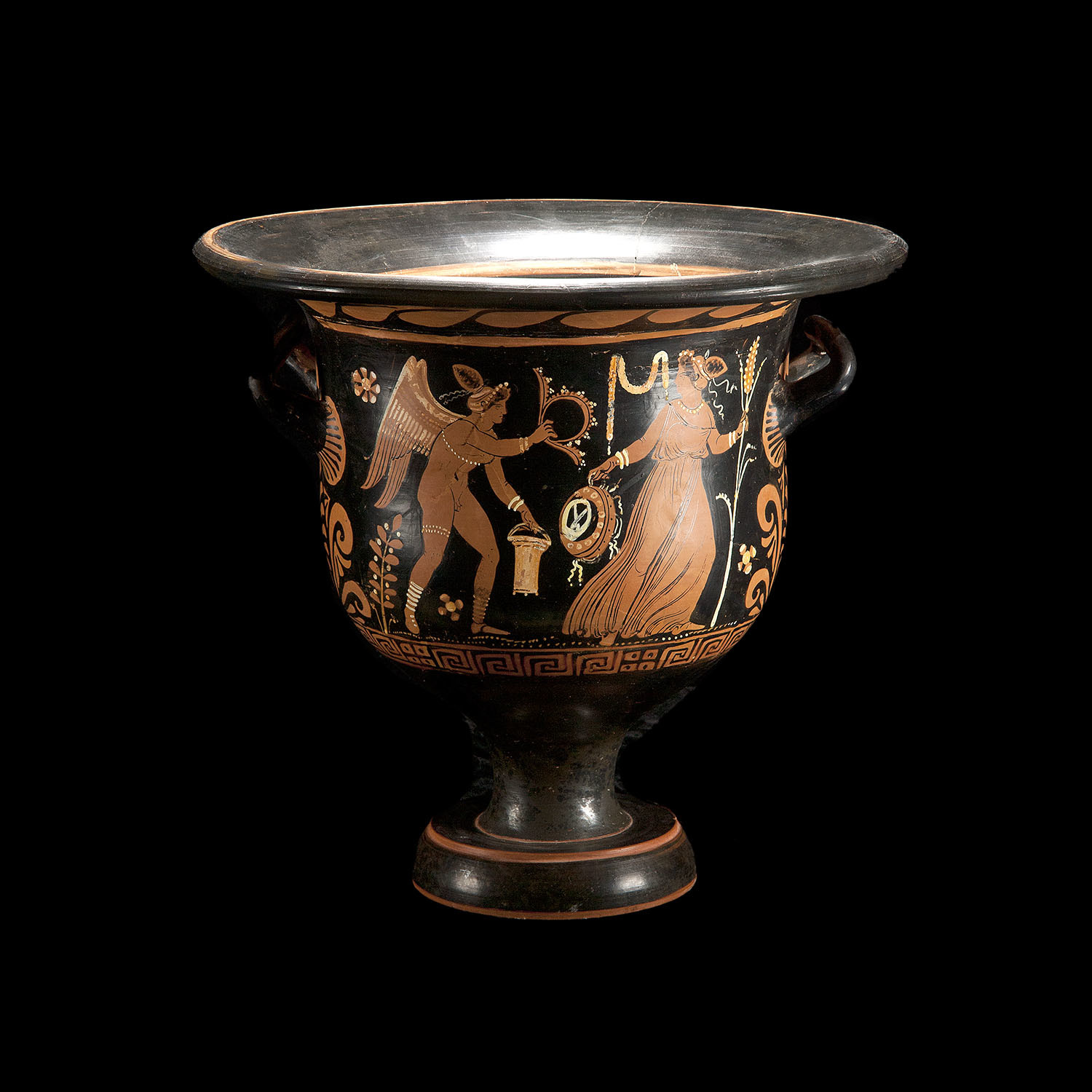This is what Paul calls another gospel.
Galatians 1:7 which is really not another, only there are some who are disturbing you and want to distort the gospel of Christ.
Galatians 1:8 But even if we, or an angel from heaven, should proclaim to you a gospel contrary to the gospel we have proclaimed to you, let him be accursed!
Christ needed sinless human flesh to take on.
Mary's sinlessness shows the dignity of her son, Jesus, who is God incarnate.
To become the mother of the Savior, Mary “was enriched by God with gifts appropriate to such a role.” The angel Gabriel at the moment of the annunciation salutes her as “full of grace.” (Lk 1:28) found grace (Lk 1:30) In fact, in order for Mary to be able to give the free assent of her faith to the announcement of her vocation, it was necessary that she be wholly borne by God’s grace, consented to “our salvation” Lk 1:38 all generations (Christians) call me blessed. Lk 1:48
Jude 1:24, which says that God is able to "keep you from stumbling and to present you “blameless”!
Christ’s witnesses! Acts1:8
((Third Century Witnesses!))
“He (the eternal Word) was the ark formed of incorruptible wood. For by this is signified that His tabernacle was exempt from putridity and corruption.”
– Hippolytus, Orations In illud, Dominus pascit me (ante A.D. 235).
“This Virgin Mother of the Only Begotten of God, is called Mary, worthy of God, immaculate of the immaculate, one of the one.” – Origen, Homily 1(A.D. 244).
((Fourth Century Witnesses))
“Let woman praise Her, the pure Mary.”
– Ephraim, Hymns on the Nativity, 15:23 (A.D. 370).
“Thou alone and thy Mother are in all things fair, there is no flaw in thee and no stain in thy Mother.” (Song of Solomon 2:1-2 & 4:7)
– Ephraem, Nisibene Hymns, 27:8 (A.D. 370).
“O noble Virgin, truly you are greater than any other greatness. For who is your equal in greatness, O dwelling place of God the Word? To whom among all creatures shall I compare you, O Virgin? You are greater than them all O Covenant, clothed with purity instead of gold! You are the Ark in which is found the golden vessel containing the true manna, that is, the flesh in which divinity resides.”
-Athanasius, Homily of the Papyrus of Turin, 71:216 (ante AD 373).
[In the above quote by Saint Athanasius, the defender of the divinity of Christ, we find him identifying Mary with the gilded Ark of the Covenant. Moreover, he is praying to her.]
“Mary, a Virgin not only undefiled but a Virgin whom grace has made inviolate, free of every stain of sin.”
– Ambrose, Sermon 22:30 (A.D. 388).
((Fifth Century Witnesses))
“We must except the Holy Virgin Mary, concerning whom I wish to raise no question when it touches the subject of sins, out of honour to the Lord; for from Him we know what abundance of grace for overcoming sin in every particular was conferred upon her who had the merit to conceive and bear Him who undoubtedly had no sin.”
– Augustine, Nature and Grace, 42 [36] (A.D. 415).
“As he formed her without my stain of her own, so He proceeded from her contracting no stain.”
– Proclus of Constantinople, Homily 1 (ante A.D. 446).
[The quote above by Proclus demonstrates that the primative Eastern Church did already articulate sin in term of a transmitted and contracted “stain.” Contemporary Eastern Orthodox dismissals of “the stain of original sin” is disingenuous.]
“A virgin, innocent, spotless, free of all defect, untouched, unsullied, holy in soul and body, like a lily sprouting among thorns.”
– Theodotus of Ancrya, Homily VI:11 (ante A.D. 446).
“The angel took not the Virgin from Joseph, but gave her to Christ, to whom she was pledged from Joseph, but gave her to Christ, to whom she was pledged in the womb, when she was made.”
– Peter Chrysologus, Sermon 140 (A.D. 449).
((Sixth Century Witnesses))
“The very fact that God has elected her proves that none was ever holier than Mary, if any stain had disfigured her soul, if any other virgin had been purer and holier, God would have selected her and rejected Mary.”
– Jacob of Sarug (ante A.D. 521).
((Seven - Ninth Century Witnesses))
“She is born like the cherubim, she who is of a pure, immaculate clay.”
– Theotokos of Livias, Panegyric for the feast of the Dormition of Mary, 5:6 (ante A.D. 650).
“Today humanity, in all the radiance of her immaculate nobility, receives its ancient beauty. The shame of sin had darkened the splendour and attraction of human nature; but when the Mother of the Fair One par excellence is born, this nature regains in her person its ancient privileges and is fashioned according to a perfect model truly worthy of God…. The reform of our nature begins today and the aged world, subjected to a wholly divine transformation, receives the first fruits of the second creation.”
– Andrew of Crete, Sermon I, On the Birth of Mary (A.D. 733).
“Truly elect, and superior to all, not by the altitude of lofty structures, but as excelling all in the greatness and purity of sublime and divine virtues, and having no affinity with sin whatever.”
– Germanus of Constantinople, Marracci in S. Germani Mariali (ante A.D. 733).
“O most blessed loins of Joachim from which came forth a spotless seed! O glorious womb of Anne in which a most holy offspring grew.” John Damascene, Homily I (ante A.D. 749).
((More witnesses))
St. Athanasius
. . . pure and unstained Virgin . . . (On the Incarnation of the Word, 8; Gambero, 102)
O noble Virgin, truly you are greater than any other greatness. For who is your equal in greatness, O dwelling place of God the Word? To whom among all creatures shall I compare you, O Virgin? You are greater than them all O Covenant, clothed with purity instead of gold! You are the Ark in which is found the golden vessel containing the true manna, that is, the flesh in which divinity resides. (Homily of the Papyrus of Turin, 71, 216; Gambero, 106)
St. Ephraem
Mary and Eve, two people without guilt, two simple people, were identical. Later, however, one became the cause of our death, the other the cause of our life (Op. syr. II, 327; Ott, 201)
The Virgin Mary is a symbol of the Church, when she receives the first announcement of the gospel . . . We call the Church by the name of Mary, for she deserves a double name. (Sermo ad noct. Resurr.; Gambero, 115)
Thou and thy mother are the only ones who are totally beautiful in every respect; for in thee, O Lord, there is no spot, and in thy Mother no stain. (Nisibene Hymns, 27, v. 8; Ott, 201)
[W]e find Ephraem delineating her as free from every stain, like her son.
St. Cyril of Jerusalem
Pure and spotless is this birth. For where the Holy Spirit breathes, all pollution is taken away, so that the human birth of the Only-begotten from the Virgin is undefiled. (Catechetical Lectures, XII, 31-32; Gambero, 140)
St. Gregory Nazianzen
He was conceived by the Virgin, who had first been purified by the Spirit in soul and body; for, as it was fitting that childbearing should receive its share of honor, so it was necessary that virginity should receive even greater honor. (Sermon 38, 13; Gambero, 162-163)
St. Gregory of Nyssa
It was, to divulge by the manner of His Incarnation this great secret; that purity is the only complete indication of the presence of God and of His coming, and that no one can in reality secure this for himself, unless he has altogether estranged himself from the passions of the flesh. What happened in the stainless Mary when the fulness of the Godhead which was in Christ shone out through her, that happens in every soul that leads by rule the virgin life. (On Virginity, 2; NPNF 2, Vol. V, 344)
T]he power of the Most High, through the Holy Spirit, overshadowed the human nature and was formed therein; that is to say, the portion of flesh was formed in the immaculate Virgin. (Against Apollinaris, 6; Gambero, 153)





